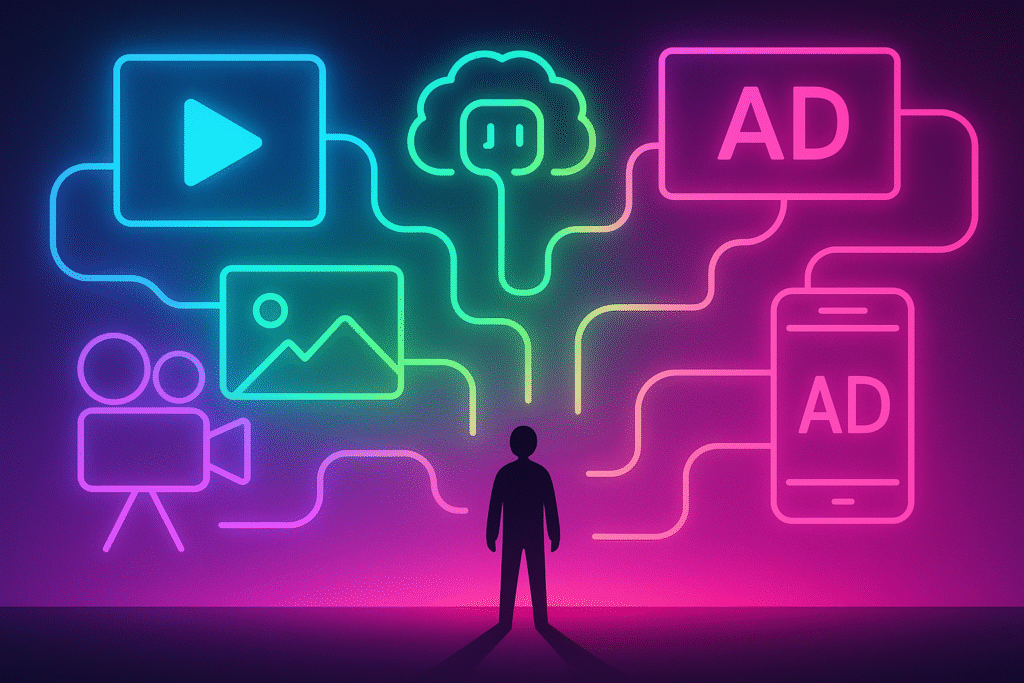For decades, the barrier to entry in advertising wasn’t just media costs — it was creative production. High-quality ad campaigns required professional video shoots, custom photography, and agencies with six-figure retainers. For small and mid-sized businesses (SMBs), that level of investment was rarely possible.
In 2025, that dynamic is shifting. AI-powered creative tools from platforms like Amazon and Roku are lowering the cost and complexity of ad production, giving small brands access to capabilities once reserved for enterprise advertisers.
The result is a new era of democratized ad creation — but also new challenges around quality, brand voice, and consistency.
This article explores how the landscape is changing, what’s working so far, the risks to watch out for, and how small brands can take advantage of this moment.
What Amazon and Roku Are Doing to Lower Barriers
Amazon has leaned heavily into AI for advertising. Its Generative AI Video Generator allows advertisers to build short, product-focused videos using only basic inputs like product descriptions and brand imagery. It also offers Image Generator and Creative Studio, which enable sellers to produce custom ad visuals without needing design software or agencies. Amazon even launched a Seller Assistant powered by “agentic AI” that helps SMBs optimize campaigns in real time by analyzing catalog data and suggesting ad assets.
According to Amazon Ads, these tools are saving small businesses hours of work while expanding the volume of creative they can test. What once took weeks of coordination with a creative team can now be produced in minutes.
Roku has taken a similar approach with streaming video. Its Ads Manager now includes AI-driven creative options that help small businesses build connected TV (CTV) ads quickly. The platform is also experimenting with formats inspired by social feeds, making streaming ads look more dynamic and approachable. By integrating with partners like Spaceback, Roku has helped SMBs repurpose existing social content into full-screen CTV ads with measurable lift.
The takeaway is clear: both Amazon and Roku are using AI to reduce costs and shorten timelines, making professional-looking ads more accessible to SMBs.
Why This Matters for Small Brands
For small businesses, AI ad creation offers several key advantages:
-
Cost savings: No need to hire video crews or agencies for every campaign.
-
Speed to market: Campaigns can launch in days or even hours.
-
Creative flexibility: Brands can test multiple variations with minimal incremental cost.
-
Competitive leveling: SMBs can now compete with larger brands in visual quality, at least in initial impressions.
In practice, this means a small e-commerce brand selling on Amazon or a regional restaurant chain advertising on Roku can produce assets that look polished enough to compete with enterprise advertisers.
What to Watch Out For
AI democratizes access, but it also comes with risks. Small brands need to be mindful of several pitfalls:
-
Generic creative: AI tools often rely on stock-like imagery or templates. Without customization, ads may look similar to competitors.
-
Brand voice consistency: Automated text or visuals can deviate from established brand identity, diluting long-term equity.
-
Quality vs. quantity: The ability to generate multiple ads quickly doesn’t guarantee they will perform. Without testing and refinement, brands risk wasting budget.
-
Audience perception: Some consumers push back when content feels artificial. Ads need authenticity to resonate.
-
Overreliance on automation: AI is a tool, not a strategy. Strong creative direction and targeting remain essential.
The democratization of creative only works when brands approach it with guardrails.
Case Studies: SMBs Using AI Advertising Successfully
Amazon SMB Research
Amazon Ads surveyed small and medium-sized businesses that adopted its generative AI tools. The findings were consistent: SMBs reported time savings, more creative variety, and improved ability to align with brand voice compared to manual processes. This allowed them to run campaigns they otherwise would not have had bandwidth for.
Rollo + Roku + Spaceback
Shipping label printer Rollo partnered with Roku and Spaceback to transform user-generated social content into connected TV ads. The results were impressive: Rollo achieved a 76% lower cost per site visit compared to previous CTV efforts. By repurposing existing assets, they scaled reach without traditional production costs.
Local SMBs on Roku Ads Manager
Examples like MRCOOL HVAC, Salsarita’s Fresh Mexican Grill, and Freeway Insurance illustrate how small businesses are using Roku Ads Manager’s self-serve AI features to run awareness and lead-gen campaigns affordably. These campaigns highlight how SMBs with modest budgets can now enter premium streaming environments.
These case studies demonstrate the power of AI tools when combined with authentic brand stories and existing content.
Actionable Tips for Small Brands
Based on platform features and case studies, here are five ways SMBs can use AI creative tools effectively:
-
Start with customer questions
Use FAQs, reviews, and sales objections as seed material for ad copy. If customers ask “How do I compare X vs. Y?” or “What’s the benefit of Z?”, build creatives that answer those questions directly. -
Create brand guardrails
Establish a style guide that includes color palette, typography, tone, and imagery rules. Apply these consistently when prompting or editing AI outputs. -
Test systematically
Run small-budget A/B tests on multiple AI-generated assets. Track CTR, conversion rate, and cost per acquisition. Double down on the winners. -
Repurpose across channels
A video made for Amazon can be trimmed for social reels. A CTV spot can be adapted into a YouTube pre-roll. Maximize ROI by stretching each asset across platforms. -
Prepare for seasonal surges
AI tools speed up production, but campaigns still need strategy. Build your creative pipeline ahead of high-demand periods like the holidays and New Year health trends.
The Future of AI Ad Creation
Looking beyond Q4 2025, AI ad creation tools will only grow more powerful. Expect:
-
Deeper integrations with retail data: Amazon’s seller assistant already tailors creative to product listings. Future tools may fully automate campaign concepts based on sales trends.
-
Expanded formats: Audio, interactive video, and mixed media campaigns generated on the fly.
-
Improved brand controls: More sophisticated customization options to align AI outputs with brand identity.
-
Greater focus on authenticity: Consumers may demand transparency on what’s AI-generated. Brands that blend automation with real voices and testimonials will stand out.
For SMBs, the key is not simply using AI tools, but learning how to balance speed and scale with brand authenticity.
Conclusion
AI is democratizing ad creation in 2025. Platforms like Amazon and Roku are making professional-quality creative accessible to small businesses at a fraction of the cost and time.
The opportunity is significant: SMBs can now launch campaigns that look competitive with large brands, test more variations, and reach audiences in premium environments like connected TV.
But success depends on smart use. Small brands that maintain consistency, lean on authenticity, and test systematically will thrive. Those that rely on AI without strategy risk looking generic.
At Engage Max Media, we believe the shift to AI-assisted creative is not just a cost-saver — it’s a competitive equalizer. And the small brands that embrace it thoughtfully will shape the next era of digital advertising.

